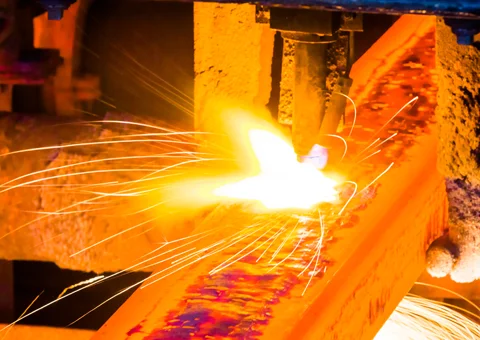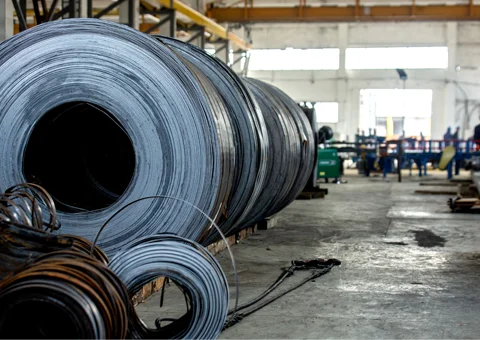Global steel and raw material prices declined m-o-m in August 2024, reveals BigMint data. Some sharp swings were detected, especially in coking coal and iron ore. The China factor is keeping hot rolled coil prices in a bear grip. Indian mills have been out-priced.
Australian coking coal is losing ground to other origins like Russia and the US, where India is concerned. Iron ore is slipping though China is still buying. Dull demand in Turkiye is impacting prices of billets, rebar and scrap. What lies ahead?
Price overview
Where flats are concerned, in August, Chinese hot rolled coil (HRC) offers lost another 6% or $32/tonne (t) m-o-m to $474/t FoB China ($506/t in July), their lowest so far since January 2021 - the time from which data is available with BigMint. Japanese offers decreased 3% to $525/t ($540/t) m-o-m while Indian mills have been holding back from the market since May.
In longs, Turkiye's rebar inched down a negligibly 0.51% to $577/t ($580/t) while Black Sea billets fell 3% to $479/t ($496/t).
All prices are on FOB basis.
In raw materials, the Fe62% iron ore fines, CFR China, dipped a sharp 7% or $7/t to $99/t ($106/t). The premium HCC coking coal from Australia, CFR India, however, headed south by a sharp 12% or $30/t to $225/t ($255/t). HMS 80:20 scrap, CFR Turkiye, dipped 4% to $375/t ($390/t) in the month under review.
Factors that impacted global steel, raw material prices in Aug'24
Chinese mills under greater pressure to export: Chinese prices overall were a drag on the market. Crude steel production in July declined a significant 9% y-o-y and by 2.2% over January-July, 2024. This decline was a direct fallout of stricter production cut diktats from the government, keeping in view three factors. One was the slew of anti-dumping investigations being launched across several geographies China has been exporting to. Secondly, demand has been very dull, as proved by the down-trending macro indicators. Lastly, China has again resumed its decarbonisation drive with renewed vigour keeping in mind its dual policy of carbon peaking by 2030 and net zero by 2060.
Against such a backdrop, mills were under greater strain to export. They continued to use pricing as a potent mechanism to lure buyers.
Indian offers on hold for 4th month: Indian mills continued to withhold offers, a trend started in May. Two factors have been guiding them. One was, of course, the aggressive Chinese offers that out-priced Indian mills from the export markets. Chinese HRC offers to Vietnam, once a key destination for India, fell to as low as $498/t CNF HCMC in August. Vietnam's domestic mills are finding it tough to match such levels. Both Hoa Phat and Formosa stood their ground at $530/t and $534/t CIF HCMC respectively this month.
Secondly, an imports surge in HRCs and plates is depressing domestic demand, and has been driving Indian mills to opt for maintenance schedules. This, in turn, decreased their export allocations and helped to keep domestic prices above Chinese export offer levels.
Turkish rebar under US scanner: Turkish rebars are finding it tough to sell in a world dominated by Chinese finished products - flats and longs. Moreover, the US Department of Commerce issued a preliminary anti-dumping decision in mid-August on Turkish rebars, whereby it was found that between 1 July 2022 till 30 June, 2023, some Turkish producers were found to have sold certain products at less than their normal value. The final results will be published 120 days from the publication of the preliminary results.
That apart, Turkiye continues to restrict sales of 54 products, including rebars, to Israel. This dikat will remain in force till Israel declares a ceasefire in Gaza. These factors are all creating hurdles to Turkiye's rebar exports and keeping prices on a leash.
Black Sea billets continues to feel blue: The Black Sea billet continues to feel blue as Russia's export tax, implemented from 1 October, 2023, will continue to remain in effect till 31 December, 2024. The tax, linked to the rouble exchange rate, and slapped on certain categories of products, including steel and its raw materials, aimed to secure supplies for domestic consumption in the wake of its invasion of Ukraine. The tax, applicable on slabs, billets, most long and flat products, pig iron, coal and coke, HBI and iron ore, is impacting export sales.
Secondly, demand from Turkiye, the Black Sea billet's main consumer, has declined sharply. Mills are avoiding semis procurements amid a decrease in steel demand.
Inventories, weak steel demand pressure China iron ore import offers: China's iron ore imports rose 6.70% in the last seven months thanks to intermittent production spikes, which can be attributed to its aggressive exports stance. But, prices of the Fe62% fines from Australia have been falling steadily from $118/t in May to $103/t in August amid overall lower crude steel production, continued weak downstream demand and falling finished steel prices. Ore inventories at Chinese ports further pressured down prices. But the falling ore prices encouraged procurements.
Imported scrap hit by Turkiye's weak rebar demand: Turkish imported ferrous scrap prices dropped 4% m-o-m in August. This decline was attributed to Turkish mills' cautious approach in procurements amid weak rebar demand in both domestic and export markets. Despite limited availability supporting price stability, the market remained bearish.
While there were speculations of potential cancellations of low-priced Chinese billet orders -- that could support scrap prices -- the overall market outlook remained bleak.
Other origins bite into Australia's coking coal share: Prices of coking coal shipped from Australia to India have slipped to sub-$300/t CFR levels since April this year amid dull steel demand. July figures indicated that India's imports of Australian premium HCC fell 19% m-o-m. Plus, monsoon kept buyers away in August as well. Another reason for the drop in Australian prices was India's increased procurement from Russia and the US in July, which were up 62% and 59% respectively.
Outlook
Steel and raw material prices are likely to continue moving in a narrow range in the near term as China still remains the single most important factor. As long as Chinese steel exports continue to drive markets, steel prices will have little scope to look up. Depressed finished prices, in turn, may be a drag on raw material prices.
Source:BigMint

